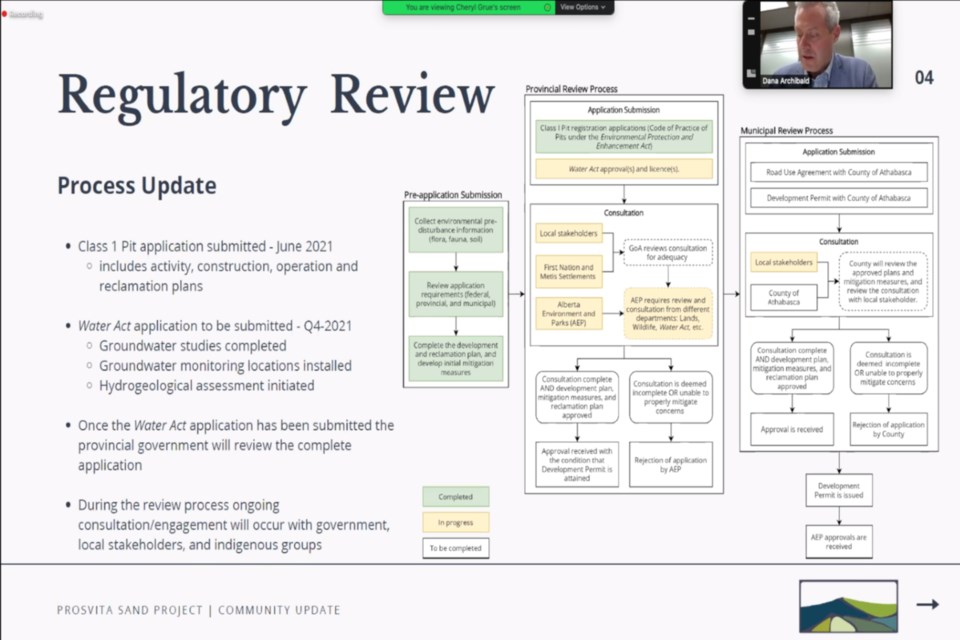ATHABASCA — Athabasca Minerals Inc. (AMI) held a virtual open house last week as part of their continuing community engagement.
While there were almost as many community members in attendance as staff, nine and five respectively, there were several key questions surrounding various aspects of the proposed sand mine sent in by concerned locals for the Oct. 27 Q&A session.
Will nearby farms and residents suffer lower future property values?
“We are going to address this as part of our socio-economic assessment and any future discussion around this topic will be addressed directly with the landowners affected,” said COO Dana Archibald.
Are the ponds toxic to wildlife and plants?
No, said senior engineer Derek Delmar, who is the health and safety engineer overseeing the project. He added people easily associate all ponds used industrially with tailing ponds which hold toxic chemicals, but this project will only use flocculants.
Flocculants are used for treatment in ponds, pools, and wastewater and cause tiny particles to clump together, called flocculation, then the larger clumps settle to the bottom where they can be easily vacuumed or filtered away.
Why do mine employees wear respirators on site if there's no silica dust in aggregates or frac sand at the project?
“The only place they’re worn is inside the drying and screening buildings. These buildings (are) subjected to negative pressure from the dust collection system so there is a little bit of dust that escapes primarily due to vibration of the screeners and the dryer,” explained vice president of projects and operations, Ryan Lissel.
“This dust in an eight-hour period isn't harmful to our workers (but) we feel that for extra protection, we should have them wear respirators to ensure that over time they continue to be healthy.”
How much water will be used?
“We do anticipate that our maximum water consumption is going to be 325 cubic meters (325,000 litres, over the life of the project),” said Delmar. “That is the maximum that we anticipate, and it is even a conservative maximum."
The largest volume of water is used during the warm months, April to September, and the sand is stockpiled for processing inside during the cold months.
How far does silica dust travel?
“The material is either damp or wet, and the stockpiles are also damp, so they don't have dust,” Lissel said.
How will the sand be transported?
"Keep in mind this is a finished product, so it doesn't have any silt or fine material in it,” said Lissel. “It is prevented from creating any type of dust or losing the product when you’re going down the road.”
In a follow up e-mail the next day, Cheryl Grue, director of corporate affairs, said a poll taken during the presentation showed most people only want to hear from AMI if there is a new development or project, but there are other conversations which will be ongoing.
"We do recognize the significant and unique conversations that need to happen with the adjacent landowners so for those of you most directly affected we will be having additional conversations and working closely with you as we move forward,” she said.



